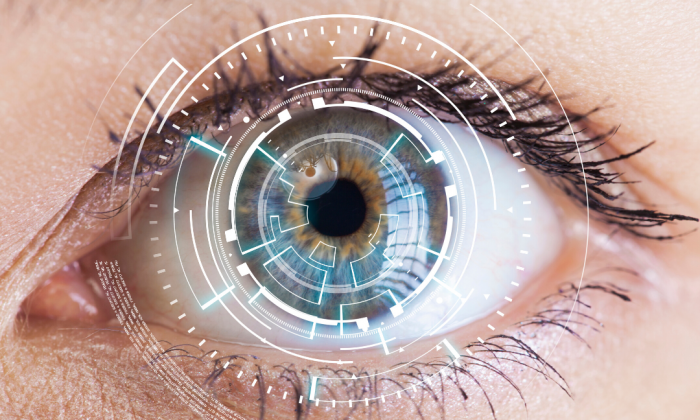What is Artificial Intelligence?

By Jocelyn Desbiens & Ron Gross, MD
Artificial Intelligence has become a popular technology with enormous potential to improve many aspects of our lives—especially in science and health care. Although a hot topic, the world of artificial intelligence is robust and ever-expanding. Today, we’re focusing on this timely subject to help demystify any confusion.
What is Artificial Intelligence?
• Artificial Intelligence (AI) simulates human intelligence processes with computer systems. These processes include learning (information acquisition and the rules for using it), reasoning (using rules to reach conclusions), and self-correction. AI works by combining large amounts of data with fast processing and intelligent algorithms, allowing the software to learn automatically from patterns or features in the data.
• Machine Learning(ML) is an application (subset) of artificial intelligence (AI) that provides automatic learning without being programmed using explicit instructions, relying on patterns and inference instead.
• Deep Learning(DL) is ML but applied to large data sets using multiple layers to progressively extract higher-level features from the raw input.
The first reference to AI was in 1956 when computer scientists proposed that computers could be programmed to think and reason, “that every aspect of learning or any other feature of intelligence [could], in principle, be so precisely described that a machine [could] be made to simulate it.”
They described this as “artificial intelligence.” AI automates intellectual tasks normally performed by humans, and ML and DL are specific methods of achieving this goal.
Uses of Artificial Intelligence
Artificial Intelligence in Medicine is a promising tool. Recent work has shown that artificial intelligence examples in medicine can develop effective diagnostic and predictive tools to identify various diseases. This has been particularly well demonstrated using images of the retina of the eye.
The retina is the only human tissue allowing direct noninvasive visualization of microvascular circulation. Using Deep Learning (DL), changes in retinal microvasculature structure have been identified as independent predictors for hypertension, diabetes, coronary disease, renal disease, and stroke. But the enhanced capability using AI is probably best demonstrated in diabetes and its effects on the eye.
Diabetes affects more than 415 million people globally – About 1 of every 11 adults. It affects the small blood vessels of the retina (DR-diabetic retinopathy) and is a leading cause of blindness worldwide.
Up to 95% of visual impairment can be prevented with early diagnosis and effective treatment. Approximately 50% of people with diabetes will have diabetic retinopathy during their lives, the longer the duration and the poorer the control, the greater the risk. However, less than half of those with diabetic retinopathy are aware of it. Additionally, 75% of patients with DR globally live in underdeveloped and underserved areas.
AI, specifically DL has demonstrated the capability to detect vision-threatening DR from retinal screening photographs with at least the same accuracy as human specialists with the benefits well studied and documented. This tool allows the efficient use of telemedicine, which can reduce access disparities in rural, underserved, and geographically isolated communities to provide retinal evaluations using cost-effective cameras and minimally trained personnel, with AI providing timely and accurate results.
This would allow greater retinal screening capabilities for other causes of vision loss as well, such as Age-Related Macular Degeneration and Glaucoma. AI is currently being developed and validated to assess those diseases from the same image. One can imagine a future where artificial intelligence-based programs become a fundamental part of patients’ clinic visits due to the capability to assist in the diagnosis and management of multiple diseases.
Challenges with AI, ML, DL
Artificial Intelligence has become an important area of discussion within healthcare given the digital nature of the information. However, many challenges still exist. AI is limited by the quantity and quality of data used to train the model. The ability of AI to generate an appropriate result depends on the ground truth that is used to develop the capability.
Thousands of training examples are required to create a model that is both accurate and generalizable with thousands more required for validation. DL methods also suffer from the “black box” problem: the algorithm acts upon the input and generates a result, but it is not known what features were identified or how they contributed to the final output. This leads to some concern as there is less understanding of the model’s process than some would desire.
Although it is relatively simple to implement artificial intelligence, it must be acknowledged that behind that, it has required substantial time and effort to generate the AI as well as optimize and validate them. Artificial intelligence and machine learning provide the potential ability to perform measurements and identify biomarkers that humans cannot. A future embracing this technology will result in enhanced diagnostic capabilities with the associated improvement in clinical outcomes and people’s vision and quality of life.
Learn more about how IRIS is working to innovate diabetic retinal exams, here.
SM035 Rev A.
Get started with IRIS today.
Want to know if IRIS is right for you? Schedule a one-on-one consultation with our team. We’re here to help.